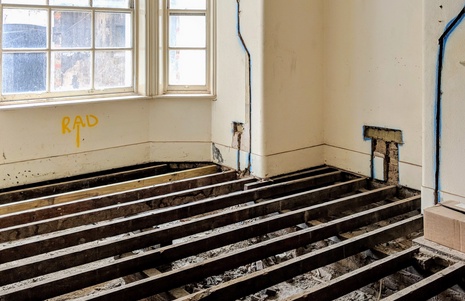Introduction:
Home insulation plays a crucial role in reducing energy consumption and lowering energy bills. While most homeowners focus on insulating walls and attics, floor insulation is just as important. Floor insulation not only helps to keep the home warm in winter and cool in summer, but it also improves sound insulation and provides added protection against moisture and pests. In this guide, we will explore everything you need to know about floor insulation, including types of insulation, installation methods, and frequently asked questions.
Types of Insulation for Floors:
There are several types of insulation that can be used for floors. The most common types include:
- Fiberglass Insulation:
Fiberglass insulation is a popular choice for floor insulation. It is affordable, easy to install, and provides excellent insulation properties. It is typically available in batts or rolls, and it can be cut to fit between floor joists.
- Cellulose Insulation:
Cellulose insulation is made from recycled paper and is treated with fire retardants. It is an environmentally friendly option and provides good insulation properties. It can be blown in between floor joists or applied as a spray foam.
- Spray Foam Insulation:
Spray foam insulation is a popular choice for floor insulation because it can easily fill gaps and voids. It provides excellent insulation properties and can also help to reduce noise and air infiltration.
Factors to Consider When Choosing Insulation:
When choosing insulation for your floors, there are several factors to consider:
- R-Value:
The R-value is a measure of insulation's thermal resistance. The higher the R-value, the better the insulation's ability to resist heat flow. You will need to consider the R-value required to achieve the desired level of insulation for your home.
- Moisture Resistance:
If your floors are prone to moisture, you will need to choose an insulation material that is moisture-resistant. Fiberglass insulation is not recommended for areas with high moisture levels.
- Pest Resistance:
If your home is located in an area with pests, such as rodents or insects, you will need to choose an insulation material that is resistant to pests. Cellulose insulation is treated with borate, which acts as a natural insecticide and fungicide.
Installation Methods:
There are two primary methods for installing insulation on floors:
- Suspended Floor:
In a suspended floor installation, insulation is installed between floor joists. This method is ideal for homes with crawl spaces or basements.
- Solid Floor:
In a solid floor installation, insulation is installed on top of the subfloor, with the finished flooring installed on top of the insulation. This method is ideal for homes with concrete floors.
Frequently Asked Questions (FAQs):
Q: Can I install insulation on top of my existing floor?
A: Yes, it is possible to install insulation on top of an existing floor. This is called a "floating floor" installation and involves installing a layer of insulation and a new subfloor on top of the existing floor.
Q: How much insulation do I need for my floors?
A: The amount of insulation you need for your floors will depend on several factors, including the climate in your area, the R-value required, and the type of flooring. A professional insulation contractor can help you determine the appropriate amount of insulation for your specific needs.
Q: Will floor insulation improve sound insulation?
A: Yes, floor insulation can help to reduce noise transmission between floors. Spray foam insulation is particularly effective at reducing noise transmission.
Conclusion:
Floor insulation is an essential part of maximizing your home's energy efficiency. By choosing the right insulation material and installation method, you can reduce energy consumption, lower energy bills, and improve comfort. A professional insulation contractor can help you choose the right insulation for your floors and ensure proper installation for maximum effectiveness.


No comments yet